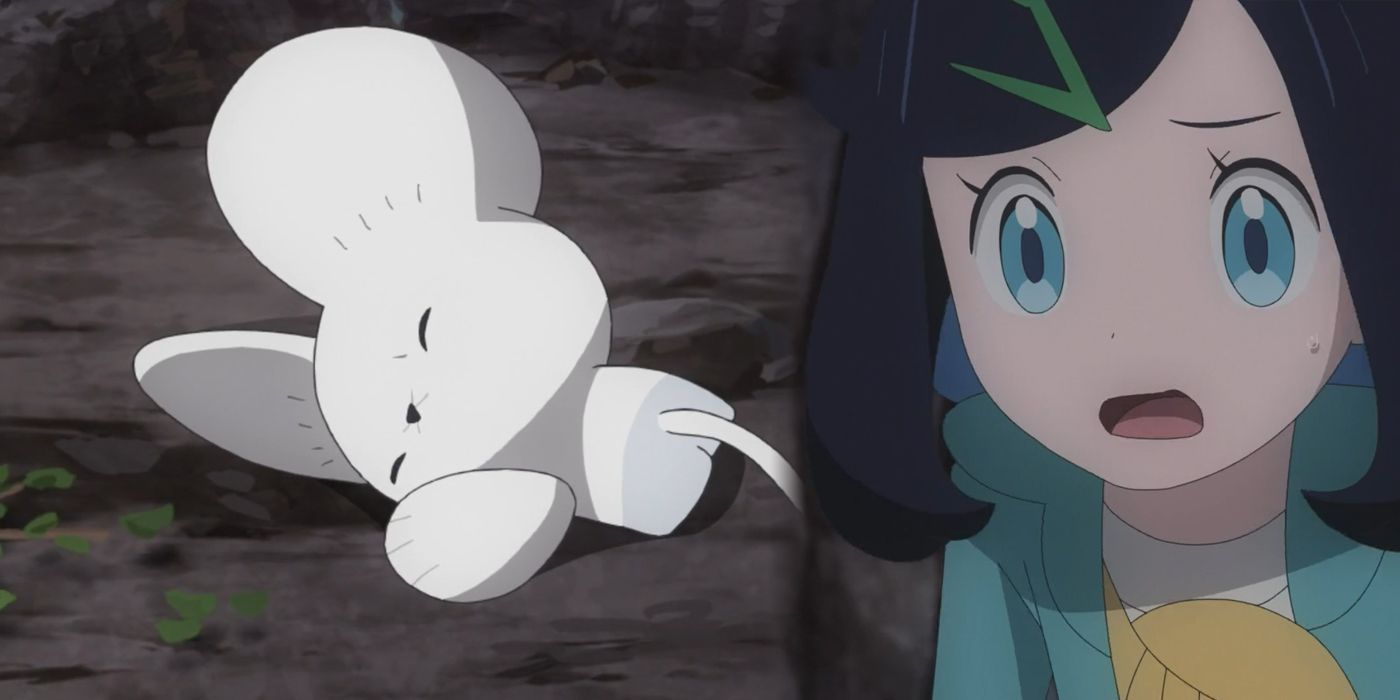
Summary
Episode #38 of Pokémon Horizons reveals what happens when paired Pokémon Tandemaus are separated. The Pokédex cannot identify the lone Tandemaus as Maushold, suggesting that the only difference between the two forms is the presence of the cubs. If the children disappear, the adults will become Tandemaus. Pokémon Horizons introduces the unusual evolution and existence of Pokémon groups such as Tandemaus and Maushold, highlighting the confusion and questions surrounding these types of Pokémon species.
Pokémon Horizon‘ the latest episode focuses on a Pokémon from the game Scarlet and Violet, revealing what happens when the permanently paired Pokémon Tandemaus are separated. The plot of the episode answers some questions that many fans have been wondering about such Pokémon for a long time and suggests that in this case, “de-evolution” could actually happen. .
In episode #38 of Pokémon Horizons, Riko and the ship’s nurse Mollie make a discovery a lone Tandemau lying injured on the ramp of a hot air balloon after a big storm. Riko uses her Pokédex to provide information about the nature of Tandemaus’ pairing. Tandemau panics and tries to get the two to help find its mate, who happens to be trapped in a nearby cave. Riko barely manages to squeeze into the mouth of the cave, and sure enough, finding another lone, wounded Tandemau inside, seemingly reunites the two.
However, the first Tandemaus they met was still worried about something and dived deeper into the cave.
In a rare twist, the Pokédex is wrong
Turned out, this is not just a pair of Tandemaus, but the evolved form, Maushold, consisting of four creatures – two adults and two children, remained trapped deeper in the cave. However, when they find the children, the cave begins to collapse, trapping Riko and the three in the Maushold. Riko’s Hatenna can use Heal Pulse to heal the babies, learning a new move for the first time. Together, the adult and two children can gnaw through the cave wall and create a new exit, allowing them all to escape.
It is very interesting that the Pokédex cannot identify the lone Tandemaus as Maushold. This suggests that the only difference between Tandemaus and Maushold is the presence of juveniles, so if anything happens to the juveniles, the adult pair will revert to being Tandemaus. That would make Maushold a rare Pokémon with the ability to “de-evolve,” something that wouldn’t normally happen (barring timing shenanigans).
Maushold and Tandemaus are an evolution unlike any other
Maushold is already a rather unusual evolution in the game; There, Tandemaus is not always “evolving!” screen, but immediately transforms into Maushold after reaching level 25 if it is not an active Pokémon. The Pokédex says that these two little ones “only appeared one day,” so this isn’t really an evolution in the traditional sense like Pokémon banding together for survival. If the two children grow up and become Tandemaus of their own, the original adults will also become Tandemaus again.
Pokémon species like Tandemaus and Maushold, which consist of multiple individuals classified as a single Pokémon, often raise some very confusing questions about how exactly they work. This has been an issue since Exeggcute and Dugtrio in the first generation, and these questions are rarely even addressed, so it’s interesting to see Pokémon Horizon introduces a group of Pokémon in situations that really highlight the strangeness of their existence.
Pokemon
Created by Satoshi Taijiri, Ken Sugimori, Junichi Masuda
First movie Pokemon: The First Movie
Latest movie Movie Pokémon: Secrets of the Jungle
First TV show chapter Pokemon
Airing date of the first episode April 1, 1997
Current line Pokemon
TV program) Pokemon

